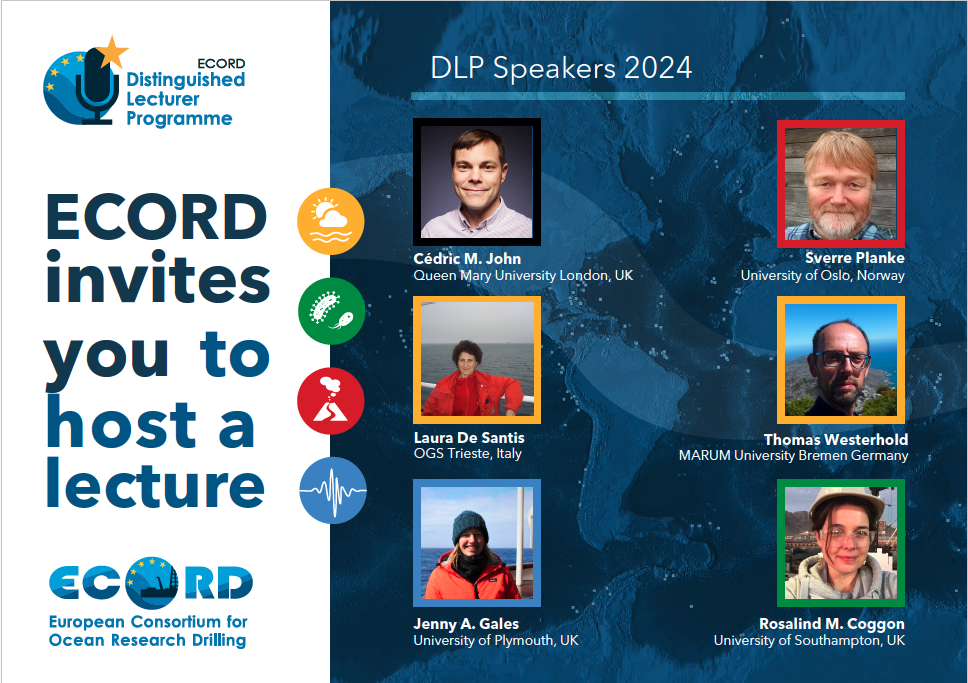
Since 2007 ECORD has been sponsoring an international lecture series given by leading scientists involved with the International Ocean Discovery Program (IODP). The ECORD Distinguished Lecturer Programme (ECORD DLP) is designed to bring the exciting scientific discoveries of the IODP to geosciences communities in ECORD and non-ECORD countries.
Every two years ESSAC selects Distinguished Lecturers based on the four main thematic areas of IODP research defined in the IODP Science Plan.
The ECORD DISTINGUISHED LECTURER PROGRAMME 2024
Call for Institutions to host an ECORD DLP Lecturer 2024
Get the full text here
The schedule of the lecturers will be principally based on the applications received by 23 December 2023, although later applications can also be considered.
Lecturers 2024
Drilling Down the Data: A Deep Learning Dive into IODP Cores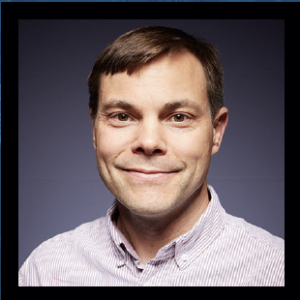
Cédric M. John (Queen Mary University London, UK)
The International Ocean Discovery Program (IODP) stands as a testament to human curiosity, having amassed a diverse collection of drilling cores which provide a window into geological processes. Core data is pivotal for understanding our planet’s past, present, and future. Despite this richness, extracting meaningful insights from core description poses significant challenges due to the inherent complexity and variability of the data, the amount of existing material, and the subjectivity of the interpreter.
Focusing largely (but not exclusively) on carbonate rocks, characterized by their heterogeneity at all observational scales, I will discuss how my research group and I have pioneered the application of deeplearning computer vision to geological core interpretation. This technology transcends the traditional, tedious manual interpretations of cores, offering a rapid, and often more accurate, alternative for delineating depositional environments and sequence stratigraphy. Convolutional neural networks (CNNs) form the backbone of our approach, enabling us to process core data with unprecedented efficiency. I will show that these sophisticated models, when correctly trained and fed with substantial datasets, serve as invaluable tools for geologists, outpacing conventional methods in speed without compromising on precision.
Our early work was centred on transfer learning, an AI approach that adapts pre-existing models to new data. I will show that this remains one of the best way to train classification algorithms for geological dataset. But we also worked on generative algorithms that fill gaps in our sampling of core imagery: for instance, we use Generative Adversarial Networks (GANs) to transform the resistivity images from formation micro scanners into representations mirroring actual core photographs, thus enhancing the interpretability for geologists irrespective of their background in downhole tools.
We tackle the often-limiting factor of dataset size in two ways. First, we recourse to generative AI to oversample our training set. Second, we also explore semi-supervised learning techniques. I will demonstrate that we successfully train models on core deformation images from IODP with minimal labelled data, achieving accuracy on par with, if not exceeding, that of transfer learning models. The arc of my talk will thus chart the course of deep learning’s evolution from a mere auxiliary tool to a pivotal force in geological sciences. Results from my research group and the broader research community indicate a promising future where deep learning not only streamlines the interpretation process but also provides robust, systematic insights that could revolutionize our understanding of geological data.
Ice sheet and ocean interaction, paleoclimate and paleoceanographic record during past glacials and interglacials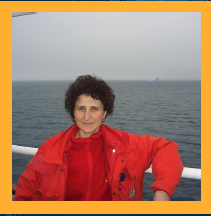
Laura De Santis (National Institute of Oceanography and Applied Geophysics OGS Trieste, Italy)
The West and East Antarctic ice sheets are the largest and oldest on Earth. Their fluctuations since the early Oligocene, triggered by orbital and greenhouse gasinduced
climate variations influenced global sea level and ocean circulation until the Northern Hemisphere ice sheets developed in the Pliocene. Thereafter, the volume of the Antarctic ice sheets changed little compared to the Arctic ice sheets younger “sisters”, which are much more sensitive to climate variability in the cooler and drier low-CO2 Quaternary world.
The sparse IODP sites from the continental margin suggest that some marinebased sectors of the Antarctic ice sheet likely retreated during the warmest Plio- Pleistocene interglacials, possibly under the influence of ocean warming and rising sea levels.
Observations that shed light on the maximum extent and retreat of the ice sheet over the continental shelf in the past, together with paleo environmental proxies are crucial for reconstructing changes in ice sheet volume and ice dynamics during glacial and interglacial periods. Estimates of ice sheet extent and environmental conditions in the past can be obtained by identifying the transition from subglacial to near-ice sediments, which coincides with the so-called “ice grounding zone”, i.e. the point at which the ice sheet detaches from its bedrock, begins to float and generally expands into ice shelves. These paleo-ice sheet reconstructions are then used to predict the rate and mechanism of the response of modern ice sheets to climate warming and the resulting global sea level rise.
This talk will present examples of sediments from the grounding zone of the ice sheet recovered during IODP Exp 374 and previous drilling projects in Antarctica. The correlation of sedimentary units with seismic profiles via the borehole logs allows the acoustic facies of these deposits to be characterised, which can be mapped spatially around the drilling sites and elsewhere in the area. This information is combined with paleoenvironmental and water depth information obtained from the sediments to reconstruct paleobathymetric maps that provide a fundamental basis for estimating the volume of the ice sheet and ice flow pathways as well as ice and ocean interaction in the past.
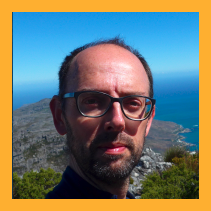 The starring role of Scientific Ocean Drilling to discover the changing states of Earth’s Climate during the past 66 million years
The starring role of Scientific Ocean Drilling to discover the changing states of Earth’s Climate during the past 66 million years
Thomas Westerhold (MARUM University Bremen, Germany)
Average global temperatures are rising due to anthropogenic emission ofgreenhouse gases. What will be the consequences? Has this happened before in Earth history? Did other climate states in the past exist with greenhouse gas concentrations like today or even higher? And if so, what was the main climate response to it? Those are just a few of the pressing questions we would like to know more about for our future. Sediment deposits at the bottom of the ocean are some of the only continuous archives recording changes in Earth’s climate for the last ~100 million years. Ocean floor sediments are prime target for scientific ocean drilling giving access to material to reconstruct past environmental and climatic conditions essential for understanding earth system processes.
In this lecture I will take the audience on a journey following the motivation and milestones reconstructing Earth’s global climate variability throughout the Cenozoic, the last 66 million years. Insight will be given to the key role of scientific ocean drilling and the international collaborative efforts associated with to enable the assembly of Earth fever curve of the past. Because resolving Earth’s climate response to astronomical forcing is essential to understand past climate dynamics and the processes involved, the lecture in particular will focus on the development of the Cenozoic Global Reference benthic foraminifer carbon and oxygen Isotope Dataset, the CENOGRID. The curve is a major product of the IODP Science Plan Illuminating earth’s past, present, and future. For the first time the record statistically disentangled four climate states of the Cenozoic: Hothouse, Warmhouse, Coolhouse, Icehouse. Depending on greenhouse gas concentrations and polar ice sheet volume Earth’s climate showed a distinctive response, or fingerprint, to astronomical forcing during each of the climate states. We now know more accurately when it was warmer or colder and we also have a better understanding of the underlying dynamics behind past climate changes.
Drilling volcanic rifted margins to understand large igneous provinces and associated global warming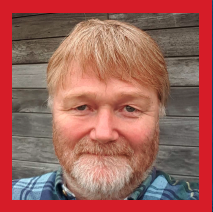
Sverre Planke (University of Oslo, Norway)
Continental breakup is a rare, but fundamental Earth event driven by massive internal forces. The splitting of Europe from Greenland some 56 million years ago was likely triggered by hot material rising from the deep mantle, forming a large igneous province. The breakup magmatism was associated with a global warming and extinction event, the Paleocene-Eocene Thermal Maximum (PETM).
IODP Expedition 396 successfully drilled 20 holes on the mid-Norwegian continental margin to better understand continental breakup processes and to test the hypothesis that associated voluminous magmatism triggered the PETM. Hole locations were carefully selected on conventional and high-resolution 3D seismic data. In total, > 4 km of sediments and volcanic rocks were drilled, recovering 2 km of core. The expedition recovered the first sub-basalt rocks on the Norwegian margin, documenting the presence of granite and inter-basalt sandstones on the Kolga High. We also cored three different seaward dipping reflectors (SDR) facies units on the Vøring Margin, representing basaltic lava flows emplaced in sub-aerial, coastal, and deep marine environments, respectively. An Outer High named Eldhø, was sampled at the termination of the Inner SDR and recovered spectacular pillow basalt units. The PETM interval was cored at the ten Modgunn Arch and Mimir High holes. The Modgunn holes drilled into the upper part of a hydrothermal vent complex. High-resolution palynology and isotope geochemistry document that the hydrothermal venting took place near the start of the PETM, supporting the hypothesis that the global warming event was triggered by shallow-water eruption of greenhouse gases formed by heating of organic-rich sediments intruded by magmatic sills.
In conclusion, scientific drilling has provided essential data to document how the Earth’s internal processes have influenced the environment and life in deep time. To understand the environmental changes in the future, it is critical to keep on drilling the ocean basins to test new hypotheses and to discover our geological past.
Deciphering Antarctic continental slope processes: new insights through ocean drilling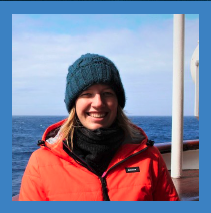
Jenny A. Gales (University of Plymouth,UK)
Antarctica’s continental slopes hold invaluable insights for understanding past climate, ice-sheet dynamics, ocean circulation, erosional and depositional processes, and submarine geohazards over millennial timescales. Antarctica has been the recent focus for International Ocean Discovery Program (IODP) Expeditions 374, 379 and 382, recovering hundreds of meters of continental slope records. This lecture presents some of the multidisciplinary results from these recent expeditions arising from Antarctic continental slope records, particularly focusing on submarine geohazards. Antarctica’s continental margins constitute an unknown geohazard risk, such as submarine landslide-generated tsunamis that pose threats to Southern Hemisphere populations and infrastructure. A major submarine landslide complex was drilled during IODP Expedition 374 on the eastern Ross Sea slope, identifying submarine landslide preconditioning factors and failure mechanisms. These recurrent submarine landslides were likely triggered by seismicity associated with glacioisostatic readjustment, leading to failure within preconditioned, climatically controlled weak layers and highlights risk of future slope failure across the region. We show multidisciplinary datasets that constrain the signature of down and along-slope processes and examine factors driving their timing, frequency, and impact. Deciphering these processes offers immense potential in understanding historical ocean circulation shifts, for example, when climates resembled ‘worst-case’ future climatic scenarios which could help understand anticipated changes in ice retreat and subsequent sea-level rise. These processes are also becoming increasing important economically as international interest in subsea internet cable connections to Antarctica grows. We discuss the implications of these findings in relation to Neogene and Quaternary West Antarctic Ice Sheet expansions to the shelf edge and finally discuss forthcoming research directions and opportunities.
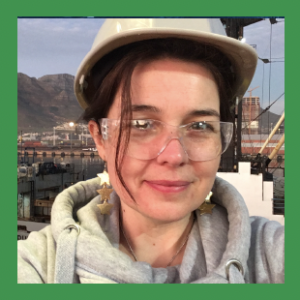 The IODP South Atlantic transect: Low-temperature Ridge Flank Contributions to Global Biogeochemical Cycles and Archives of Changing Global Conditions
The IODP South Atlantic transect: Low-temperature Ridge Flank Contributions to Global Biogeochemical Cycles and Archives of Changing Global Conditions
Rosalind M. Coggon (University of Southampton, UK)
Throughout its life the ocean crust is a key boundary between Earth’s interior and the oceans/atmosphere. Hydrothermal circulation of seawater-derived fluids through the cooling and aging crust results in chemical exchange between Earth’s interior and oceans and atmosphere, playing an important role in long-term biogeochemical cycles.
Hydrothermally altered ocean crust provides a time-integrated record of its geochemical exchange with seawater. Just as cooling crust preserves a signal ofEarth’s magnetic field and hence a record of plate tectonics, cores recovered by scientific ocean drilling have revealed that hydrothermal minerals that form from seawater derived fluids across the ridge flank record the evolving chemistry of the overlying oceans – itself an integrator of a range of Earth processes. This led to a dramatic shift in appreciation of studies of hydrothermally altered ocean crust, as they enable us to both reconstruct past ocean chemistry and decipher the Earth processes responsible for variations in these records. I will present an overview of how scientific ocean drilling experiments across ridge flanks contribute to our understanding of the processes that control ridge flank hydrothermal exchanges, the role these exchanges play in global geochemical cycles, and the extent to which they record and respond to wider changes in the Earth system.
The South Atlantic Transect (IODP Expeditions 390C/395E/390/393) was designed to recover the upper crust and overlying sediments across the western flank of the slow-spreading Mid-Atlantic Ridge to investigate hydrothermal aging and microbiological evolution of the ocean crust, and the paleoceanographic evolution of the overlying South Atlantic. This lecture will include an overview of this multidisciplinary drilling campaign, with a particular focus on how the recovered crustal cores have revealed that the extent and duration of ridge flank hydrothermal carbonate precipitation are influenced by crustal architecture, which is strongly influenced by spreading rate. Consequently, ridge flank hydrothermal contributions to the long-term planetary carbon cycle depend on the global length of slow-, intermediate-, and fast-spreading ridges and the age distribution of the ridge flanks, which have varied significantly throughout the Phanerozoic.
Lecturers 2018/19
Evolution and adaptation of calcareous nannoplankton to Plio-Pleistocene oceanographic environments
Luc Beaufort (CEREGE, France) 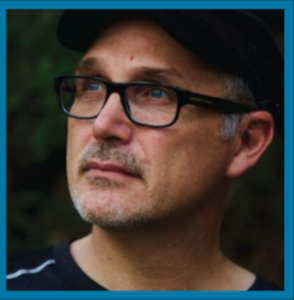
Because of their relative high evolutionary rates, great abundance and broad geographic distribution, the calcite remains of coccolithophores (coccoliths) are intensively used in biostratigraphy, and their appearance and extinction datums have been calibrated to the Geologic Time Scale.
The development in the recent years of new tools in microscopy (automation) and computing (Artificial Neural Network /deep learning methods) makes possible automatic detection of species of coccoliths with simultaneous automated morphometry. I show here how these new tools allow to use the size of coccoliths of the Order Isochrysidales for enhanced stratigraphic resolution of the Plio Pleistocene stratigraphic interval. The coccoliths of the Order Isochrysidales, which includes the cosmopolitan genera Emiliania, Gephyrocapsa, and Reticulofenestra, are the most abundant coccolithophores in the Neogene fossil record. Their size and thickness are highly variable, both within and between populations, This morphological variability is part of an adaptive strategy. Measurements of mass, length and width were obtained automatically on several hundred coccoliths per samples collected at orbital to suborbital-resolution in 11 cores drilled in the Indo-Pacific Warm-pool and Bay of Bengal during IODP Expeditions 353, 363 and IMAGES III, and XIII in the tropical Indo-Pacific Oceans, all of which span the upper Pleistocene and some of them extending into the Pliocene. A bimodal distribution in size is apparent in most of the samples with a mode separation ~ 3 μm. The mass and size of the large and small groups show mirrored (opposite) fluctuations. A general pattern of distinct, synchronous and consistent morphological fluctuations is common to all sites in the studied area. Their rhythm closely parallels the eccentricity cycles of the Earth’s orbit. The complete description of this pattern not only have paleoceanographic applications (carbon cycle, seasonality, strength of monsoon), it can also be used in biostratigraphy. This new methodology, which associates automated microscopy, deep learning algorithm and time series analysis, produces fast, reliable and precise biostratigraphic subdivisions for the Neogene.
Exploring the limits of Earth’s habitability by scientific ocean drilling: The impact of temperature on microbial life and carbon flow in deep sub-seafloor sediments
Verena Heuer (MARUM, Germany)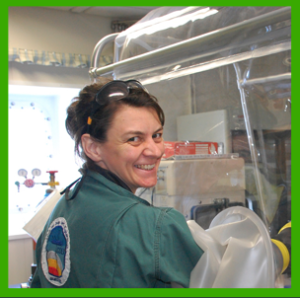
The ocean floor is an important interface at which geological, physical, biological and chemical processes interact. Geological processes shape the ocean floor and result in vastly different environments, such as mid-ocean ridges where new ocean floor is formed, subduction zones where old ocean floor is transferred back into the Earth’s interior, cold seeps and hot vents which release fluids and gases from within the ocean floor, and vast areas and volumes of sediment. In these environments, temperature varies widely, and microbial communities are widespread and surprisingly diverse despite energy limitations. Microbial life persists even in sediments of Cretaceous age, at sediment depths of up to 2.5 km below the seafloor, and in deeply buried oceanic crust. However, the total amount of subsurface biomass is still a matter of debate, the metabolic activities of deeply buried microbes are barely explored, and the factors posing ultimate limits to deep life and the habitability of Earth remain to be resolved.
This lecture will specifically address the role of temperature in deep geosphere-biosphere interactions. It will investigate the impact of temperature on the abundance and activity of microorganisms, on the biotic and abiotic transformation of sedimentary organic matter, and on carbon flow within the ocean floor. To this end, we will discuss the results and technological challenges of recent scientific ocean drilling expeditions in high temperature environments, in particular IODP Expedition 337 Shimokita Deep Coalbed Biosphere and Expedition370 Temperature Limit of the Deep Biosphere off Cape Muroto. The former was the first scientific ocean drilling expedition to target a deep hydrocarbon reservoir by riser-drilling technology, and it recovered up to 2.5 km deep, 60°C coal-bearing sediments and associated fluids and gases. The latter aimed to probe the deepest extent of life in ocean-floor sediments, known as the biotic fringe, and applied particularly strict contamination control measures when up to 120°C sediments were retrieved from a 1.2 km deep borehole in the Nankai Trough subduction zone. The lecture will conclude with a discussion of open questions, future challenges and drilling targets within IODP’s Biosphere Frontier Theme.
Drilling the oceanic mantle lithosphere: A window on melt extraction and mantle metasomatism at ridges
Marguerite Godard (Géosciences Montpellier, France)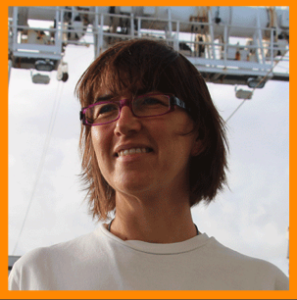
The oceanic crust represents more than 70% of the Earth’s surface and its continuous formation along spreading centres is one of the most notable demonstrations of plate tectonics. It is widely accepted that partial melting of the upwelling mantle beneath spreading centres feeds the dominantly basaltic ridge magmatism. Abyssal peridotites exposed at avolcanic segments and tectonic windows along slow and fast spreading ridges have long been considered as simple mantle residues of mid-oceanic ridge basalt formation. Over the last 25 years, petrological and geochemical studies of abyssal peridotites revealed more complex petrogenetic processes (mantle metasomatism, melt impregnation, …) and suggested that the transport of melts from the mantle toward the surface contributed also to the composition and architecture of the shallow mantle. Scientific drilling provides the only means to document, from the micro- to tens of meter scale, the structural and textural heterogeneities resulting from these magmatic processes. So, although drilling expeditions targeting successfully mantle peridotites along ridges were rare (ODP Legs 153 and 209 along the Mid-Atlantic Ridge, ODP Leg 147 at Hess Deep), scientific drilling was, and remains, determinant for our understanding of the processes driving the construction of the oceanic lithosphere.
Unlocking the secrets of slow slip using next-generation seismic experiments and IODP drilling at the north Hikurangi subduction zone, New Zealand
Rebecca Bell (Imperial College, UK) 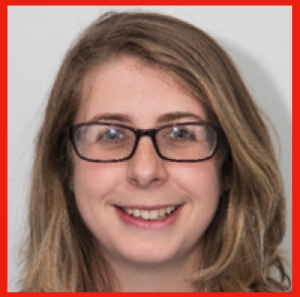
Subduction plate boundary faults are capable of generating some of the largest earthquakes and tsunami on Earth, such as the 2011 Tōhoku, Japan. However, in the last 15 years a new type of seismic phenomena has been discovered at subduction zones: slow slip events (SSEs), where slip occurs too slowly to produce seismic waves. SSEs may have the potential to trigger highly destructive earthquakes and tsunami on faults nearby, but whether this is possible and why SSEs occur at all are two of the most important questions in earthquake seismology today. IODP Expeditions 372 and 375 drilled the north Hikurangi subduction zone in New Zealand, where well-characterised SSEs occur every 1-2 years at depths of <2 -15 km below seafloor. The expedition installed two borehole observatories close to the patch of slow slip to investigate physical property changes over the slow slip cycle, and collected geophysical log and core data to characterize the sediment and rock types involved in slow slip. New seismic images (made using man-made acoustic waves) collected in 2017-2018 will in the future allow us to better understand the slow slip environment in 3D below and around the drill sites. In this presentation Rebecca Bell will discuss the objectives and preliminary findings of Expedition 372/375 and the recent seismic experiments, which aim to unlock the secrets of slow slip.
Lecturers 2016/2017
Biotic response to Cenozoic climate perturbations: new insights from ocean drilling
Bridget Wade, University College London: b.wade@ucl.ac.uk 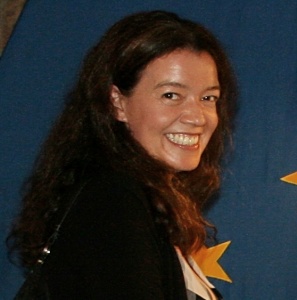 Determining past oceanographic change often involves organic or inorganic geochemical proxies, however, there is a wealth of information available from examining alterations in the assemblages of marine biota. Microscopic fossils (foraminifera, nannofossil, diatoms, radiolarians) are abundant in deep sea sediments and can provide a record of paleoceanographic change. Marine cores from the International Ocean Discovery Program and its predecessors allows examination of how different groups responded through time, and in particular their reaction at climatic perturbations. Changes in the marine biota may involve the extinction of species or groups of species that can tell us about alterations in their habitat. It can also comprise the enhanced abundance of a particular species, or a group, for a short interval of time (acme events). The dwarfing of organisms is increasingly becoming recognised as a response to environmental stress, however, I will show several intervals in the Cenozoic where a species became much larger for a short interval of time. Different plankton groups respond in different ways. For example, a major turnover in both calcareous (planktonic foraminifera) and siliceous (radiolarians) zooplankton occurred at the middle/late Eocene boundary about 38 Ma. New analysis of the nannofossil assemblages indicates a relatively muted response, and demonstrates the contrasting sensitivity to environmental change in these plankton groups. This talk focuses on Cenozoic ocean drilling records where the marine microfossils respond in sometimes mysterious ways, with particular focus on the Eocene, Oligocene and Miocene.
Determining past oceanographic change often involves organic or inorganic geochemical proxies, however, there is a wealth of information available from examining alterations in the assemblages of marine biota. Microscopic fossils (foraminifera, nannofossil, diatoms, radiolarians) are abundant in deep sea sediments and can provide a record of paleoceanographic change. Marine cores from the International Ocean Discovery Program and its predecessors allows examination of how different groups responded through time, and in particular their reaction at climatic perturbations. Changes in the marine biota may involve the extinction of species or groups of species that can tell us about alterations in their habitat. It can also comprise the enhanced abundance of a particular species, or a group, for a short interval of time (acme events). The dwarfing of organisms is increasingly becoming recognised as a response to environmental stress, however, I will show several intervals in the Cenozoic where a species became much larger for a short interval of time. Different plankton groups respond in different ways. For example, a major turnover in both calcareous (planktonic foraminifera) and siliceous (radiolarians) zooplankton occurred at the middle/late Eocene boundary about 38 Ma. New analysis of the nannofossil assemblages indicates a relatively muted response, and demonstrates the contrasting sensitivity to environmental change in these plankton groups. This talk focuses on Cenozoic ocean drilling records where the marine microfossils respond in sometimes mysterious ways, with particular focus on the Eocene, Oligocene and Miocene.
Controls on microbial population size and community structure in subseafloor environments
Mark Alexander Lever, ETH Zurich: mark.lever@usys.ethz.ch 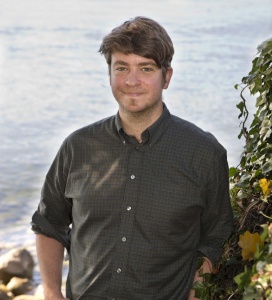 I will discuss how the interplay of environmental variables, such as temperature and redox conditions, as well as availability of organic and inorganic energy substrates determine the population size and community structure of microorganisms in deeply buried sediments and crustal environments. I will show how rates of biomolecule-damaging reactions, e.g. amino acid racemization, DNA depurination, and the energetic cost of biomolecule repair are direct consequences of the temperature and redox environment and that therefore temperature and redox conditions exert a key influence on microbial population size in subsurface environments. In addition, I will discuss the role the chemical composition of microbial energy substrates has in determining the community structure of microorganisms. I will present the hypothesis that the macromolecular composition of biogenic organic compounds is a key determinant of microbial community structure in the majority of subseafloor sediments, whereas in subseafloor crustal environments and deep sediments in proximity to seismically and geothermally active zones the composition of geogenic inorganic and small organic molecules is the main driver of microbial community structure. I will conclude with an outlook on important scientific goals and drilling targets of future subsurface microbiological research, and demonstrate how scientific observations and hypotheses resulting from ocean drilling expeditions are challenging fundamental microbiological concepts and transforming our understanding of life on Earth and beyond.
I will discuss how the interplay of environmental variables, such as temperature and redox conditions, as well as availability of organic and inorganic energy substrates determine the population size and community structure of microorganisms in deeply buried sediments and crustal environments. I will show how rates of biomolecule-damaging reactions, e.g. amino acid racemization, DNA depurination, and the energetic cost of biomolecule repair are direct consequences of the temperature and redox environment and that therefore temperature and redox conditions exert a key influence on microbial population size in subsurface environments. In addition, I will discuss the role the chemical composition of microbial energy substrates has in determining the community structure of microorganisms. I will present the hypothesis that the macromolecular composition of biogenic organic compounds is a key determinant of microbial community structure in the majority of subseafloor sediments, whereas in subseafloor crustal environments and deep sediments in proximity to seismically and geothermally active zones the composition of geogenic inorganic and small organic molecules is the main driver of microbial community structure. I will conclude with an outlook on important scientific goals and drilling targets of future subsurface microbiological research, and demonstrate how scientific observations and hypotheses resulting from ocean drilling expeditions are challenging fundamental microbiological concepts and transforming our understanding of life on Earth and beyond.
Serpentinization and life: Insights through ocean drilling
Gretchen Früh–Green, ETH Zurich: frueh-green@erdw.ethz.ch 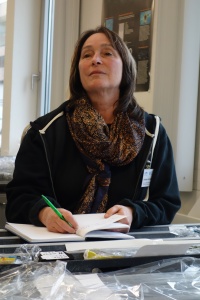 Ultramafic and lower crustal rocks are exposed on the seafloor in many tectonic settings and have been the target of a number of expeditions throughout the history of ocean drilling. Progressive interaction of seawater with mantle-dominated lithosphere during serpentinization is a fundamental process that controls rheology and geophysical properties of the oceanic lithosphere and has major consequences for heat flux, geochemical cycles and microbial activity in a wide variety of environments. At slow spreading ridge environments, serpentinization occurs along detachment faults (major, large-scale offset normal faults), as mantle rocks are uplifted to the seafloor and are incorporated in dome-shaped massifs known as oceanic core complexes. The processes controlling fluid flow and a deep biosphere are intimately linked, however, the spatial scale of lithological variability, the implications for geochemical cycles and the consequences for subsurface ecosystems supported by these systems remain poorly constrained. This presentation will provide an overview of mid-ocean ridge processes and will highlight recent results of drilling the Atlantis Massif on the western flank of the Mid- Atlantic Ridge at 30°N. The Atlantis Massif is one of the best-studied oceanic core complexes and hosts the unique Lost City hydrothermal field on its southern wall. Serpentinization reactions in the underlying mantle rocks produce high pH fluids that form large carbonate-brucite structures upon venting on the seafloor. The fluids have negligible dissolved carbonate and metals, but have high concentrations of hydrogen, methane and formate that support novel microbial communities dominated by methane- cycling archaea in the hydrothermal carbonate deposits. Understanding the links between serpentinization processes and microbial activity in the shallow subsurface of the Atlantis Massif was the focus of IODP Expedition 357, which used seabed rock drilling technology for the first time in the history of the ocean drilling programs to recover ultramafic and mafic rock sequences along a detachment fault zone. The expedition also successfully applied new technologies that provide insight into active serpentinizing systems. A sensor package and water sampling system on the seabed drills monitored real-time variations in dissolved oxygen and methane, pH, oxidation-reduction potential, temperature and conductivity during drilling and allowed sampling of bottom water after drilling. A borehole plug system for sealing the boreholes was installed at two sites to allow access for future sampling; and chemical tracers for contamination testing were delivered into the drilling fluids with the seabed drills. Thus, results of drilling the Atlantis Massif will provide important insights for future studies of serpentinization processes and microbial activity at slow-spreading ridges.
Ultramafic and lower crustal rocks are exposed on the seafloor in many tectonic settings and have been the target of a number of expeditions throughout the history of ocean drilling. Progressive interaction of seawater with mantle-dominated lithosphere during serpentinization is a fundamental process that controls rheology and geophysical properties of the oceanic lithosphere and has major consequences for heat flux, geochemical cycles and microbial activity in a wide variety of environments. At slow spreading ridge environments, serpentinization occurs along detachment faults (major, large-scale offset normal faults), as mantle rocks are uplifted to the seafloor and are incorporated in dome-shaped massifs known as oceanic core complexes. The processes controlling fluid flow and a deep biosphere are intimately linked, however, the spatial scale of lithological variability, the implications for geochemical cycles and the consequences for subsurface ecosystems supported by these systems remain poorly constrained. This presentation will provide an overview of mid-ocean ridge processes and will highlight recent results of drilling the Atlantis Massif on the western flank of the Mid- Atlantic Ridge at 30°N. The Atlantis Massif is one of the best-studied oceanic core complexes and hosts the unique Lost City hydrothermal field on its southern wall. Serpentinization reactions in the underlying mantle rocks produce high pH fluids that form large carbonate-brucite structures upon venting on the seafloor. The fluids have negligible dissolved carbonate and metals, but have high concentrations of hydrogen, methane and formate that support novel microbial communities dominated by methane- cycling archaea in the hydrothermal carbonate deposits. Understanding the links between serpentinization processes and microbial activity in the shallow subsurface of the Atlantis Massif was the focus of IODP Expedition 357, which used seabed rock drilling technology for the first time in the history of the ocean drilling programs to recover ultramafic and mafic rock sequences along a detachment fault zone. The expedition also successfully applied new technologies that provide insight into active serpentinizing systems. A sensor package and water sampling system on the seabed drills monitored real-time variations in dissolved oxygen and methane, pH, oxidation-reduction potential, temperature and conductivity during drilling and allowed sampling of bottom water after drilling. A borehole plug system for sealing the boreholes was installed at two sites to allow access for future sampling; and chemical tracers for contamination testing were delivered into the drilling fluids with the seabed drills. Thus, results of drilling the Atlantis Massif will provide important insights for future studies of serpentinization processes and microbial activity at slow-spreading ridges.
Thrilling advances in the understanding the up-dip limit of subduction zones and the associated risks of tsunami and earthquakes through scientific drillings
Marianne Conin, University of Lorraine, Nancy: marianne.conin@univ-lorraine.fr 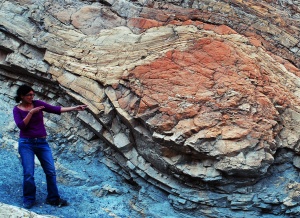 Abstract coming soon – this lecture can be hosted from summer 2017 onwards!
Abstract coming soon – this lecture can be hosted from summer 2017 onwards!
Lecturers 2015/2016
Christian France-Lanord, Centre de Recherches Pétrographiques et Géochimiques-CNRS, Nancy, France Himalaya: from mountains to drilling in the Bengal fan >> Abstract
Current Schedule
ISTerre, Maison des Geoscience France 27 May 2015 (hosted by Alexandra Gourland)
University of Southampton & National Oceanography Centre, UK 29 May 2015 (hosted by Christopher Pearce)
CEREGE, Aix-en-Provence, France 18 Nov 2015 (hosted by Gilbert Camoin)
Istanbul IODP Day, Turkey 15 Oct 2015
University of Edinburgh, UK 2 Nov 2016 (hosted by Hugh Sinclair)
Jens Kallmeyer, GFZ German Research Centre for Geosciences, Helmholtz Centre Potsdam, Germany What controls abundance and activity of microbial life in subsurface sediments? New insights from scientific drilling >>Abstract
Current Schedule
University of British Columbia, Canada 16 Jan 2015 (hosted by Sea Crowe)
Ottawa-Carleton Geoscience Centre (OCGC) and the Geological Survey of Canada, Canada 20 Jan 2015 (hosted by Christopher Lawley)
University of Toronto, Canada 22 Jan 2015 (hosted by James Brenan)
Scottish Universities Environmental Research Centre (SUERC), UK 15 March 2015 (hosted by Dan Barford)
Newcastle University, UK 19 March 2015 (hosted by Ian Head)
Istanbul IODP Day, Turkey 15 Oct 2015
Aarhus University, Denmark 20 Oct 2015 (hosted by Clemens Glombitza)
Universities of Aveiro, Portugal 3 Nov 2015 (hosted by Luis Pinheiro)
Antony Morris, School of Geography, Earth and Environmental Sciences, Plymouth University, UK What can magnetism tell us about oceanic tectonics? New insights from scientific drilling >> Abstract
Current Schedule
Leibniz University Hannover, Germany 19 Jan 2015 (hosted by Juergen Koepke)
Institute for Geophysics and Extraterrestrial Physics, TU Braunschweig, Germany 20 Jan 2015 (hosted by Martin Neuhaus)
Geosciences Montpellier, France 6 Feb 2015 (hosted by Benoit Ildefonse)
Utrecht University, The Netherlands 13 March 2015 (hosted by Marco Maffione)
Institut de Physique du Globe de Strasbourg, France 31 March 2015 (hosted by Daniel Sauter)
University of Bremen, Germany 6 May 2015 (hosted by Wolfgang Bach)
Uppsala University, Sweeden 19 May 2015 (hosted by Ian Snowball)
Gabriele Uenzelmann-Neben, Alfred-Wegener-Institut Helmholtz-Zentrum fuer Polar- und Meeresforschung, Bremerhaven, Germany Reconstructing palaeo-circulation: Reading sediment drifts with the aid of IODP information >> Abstract
Current Schedule
University of Hull, UK 27 April 2015 (hosted by Rebecca Williams)
Department of Geography at Northumbria, UK 29 April 2015 (hosted by Vasile Ersek)
University College London, UK 1 May 2015 (hosted by Bridget Wade)
University of Leicester, UK 5 May 2015 (hosted by Sally Morgan)
Heidelberg University, Germany 19 May 2015 (hosted by Oliver Friedrich)
University of Perpignan, France 23 Oct 2015 (hosted by Serge Berné)
Castel dellOvo, Naples, Italy 28 Oct 2015 (hosted by Marco Sacchi)
Instituto Portugues do Mare da Atmosfera (IPMA), Portugal 3 Nov 2015 (hosted by Fatima Abrantes)
Helmholtz Centre Potsdam – GFZ German Research Centre for Geosciences, Germany 29 Jan 2016 (hosted by Magdalena Scheck-Wenderoth)
Paola Vannucchi, Earth Sciences Department, Royal Holloway, University of London, Surrey, UK Understanding megathrust earthquakes through ocean drilling >> Abstract
Current Schedule
Modena e Reggio Emilia University, Italy 25 May 2015 (hosted by Francesca Remitti)
University of Graz, Austria 10 March 2015 (hosted by R Walter Kurz)
Plymouth University, UK 19 March 2015 (hosted by Antony Morris)
Durham University, UK 28 April 2015 (hosted by Richard Hobbs)
Haifa and Ben Gurion Universities, Israel 5 May 2015 (hosted by Nicolas Waldmann)
Geosciences Montpellier,France 5 June 2015 (hosted by Benoit Ildefonse)
University of Victoria, Canada 14 Sept 2015 (hosted by Laurence Coogan)
Institut de Physique du Globe de Paris, France 28 Oct 2015 (hosted by Catherine Mével)
Istanbul IODP Day, Turkey 15 Oct 2015
GEOMAR, Kiel , Germany 27 Nov 2015 (hosted by Michael Stippg)
Lecturers 2013/2014
Roger Urgeles, Institut de Ciences del Mar, Barcelona, Spain, Submarine landslides and derived tsunamis, new challenges for the IODP Abstract Schedule Ghent University, Belgium April 30, 2013 (hosted by David Van Rooij) Dalhousie University, Canada Oct. 24, 2013 (hosted by Markus Kienast) Geological Survey of Canada, Atlantic, Canada Oct. 25, 2013 (hosted by David Mosher) University of Leeds, UK Nov. 11-12, 2013 (hosted by David Hodgson) Kiel University, Germany Nov. 19, 2013 (hosted by Sebastian Krastel) Westfalische Wilhelms-Universitat MŸnster, Germany Nov. 20, 2013 (hosted by Harald Strauss) ABCJ- Geoverbund, Germany Nov. 22, 2013 (hosted by Klaus Reicherter) Benoit Idelfonse, Universite Montpellier, France, Mantle, ocean crust and seawater: where are we, and what«s next inScientific Drilling Abstract Schedule Ottawa-Carleton Geoscience, Canada Sep. 26, 2013 (hosted by Pascal Audet) ICM Barcelona, Spain Oct. 18, 2013 (hosted by Hector Perea) University of Hannover, Germany Nov. 4, 2013 (hosted by Juergen Koepke) Ruhr-UniversitŠt Bochum , Germany Nov. 6, 2013 (hosted by Sumit Chakraborty) Stockholm University , Sweden 16 January 2014 (hosted by Eve Arnold) Plymouth University ,UK 11 February 2014 (hosted by Antony Morris) UniversitŽ Blaise Pascal, Laboratoire Magmas et Volcans, Clermont-Ferrand , France 25 February 2014 (hosted by Estelle Rose-Koga and Ali Bouhifd) University of Gdansk ,Poland 4 April 2014 (hosted by Monika Dolinska) Claude Hillaire Marcel, Universite du Quebec, Montreal, Canada, The Arctic Ocean in the Cenozoic climate system Abstract Schedule Bordeux University, France April 26, 2013 (hosted by Frederique Eynaud) Tromso University, Norway Sept. 11-14, 2013 (hosted by Husum Katrine) Aarhus University, Denmark Sept. 14-18, 2013 (hosted by Bo Barker) University of Vienna, Austria Oct. 10, 2013 (hosted by Michael Wagreich) University of Algarve, Portugal Oct. 24, 2013 (hosted by Cristina Veiga) Geological Survey of Portugal, Lison, Portugal Oct. 28, 2013 (hosted by Antje Voelker) University of Haifa, Israel Nov. 6, 2013 (hosted by Nicolas Waldman/Carlota Escutia) Universite Paris VI, Institut de Physique du Globe, France Nov. 13, 2013 (hosted by Laure Meynadier) University of Triestre, Italy Nov. 18, 2013 (hosted by Renata G. Lucchi) University of Liverpool, UK Dec. 18, 2013 (hosted by Fabienne Harret-Davies)
Lecturers 2010/2012
In the “Deep Biosphere and Subseafloor Ocean” theme: Kai-Uwe Hinrichs, MARUM, University of Bremen, D Benthic archaea – the unseen majority with importance to the global carbon cycle revealed by IODP drilling Abstract Schedule Kai-Uwe Hinrichs’ past and current scheduled lectures: University of Michigan, USA October 29, 2010 ICBM, University of Oldenburg, Germany December 01, 2010 Center for Geomicrobiology, University of Aarhus, Denmark June 14, 2011 (hosted by Beth Orcutt) Department of Geology, University of Tromso, Norway September 30, 2011 (hosted by Jurgen Mienert/Katarzyna Zamelczyk) University of Stockholm, Sweden (hosted by Nils G. Holm) University of Perpignon, France October, 2011 (hosted by Serge Berne) In the “Solid Earth Cycles and Geodynamic” theme: Dominique Weis, PCIGR, University of British Columbia, CDN What do we know about mantle plumes and what more can we learn by IODP drilling? Abstract Schedule Dominique Weis’ past and current scheduled lectures: University of Toronto, Department of Geology, Toronto, Canada March 30, 2011 (hosted by Rebecca Ghent) University of Ottawa, Department of Earth Sciences, Ottawa, Canada March 31, 2011 (hosted by Sandra Sheperd) Ghent University, Belgium May 10, 2011 (hosted by David Van Rooij, Marc De Batist, Marlina Elburg) University of British Columbia, Canada September 15, 2011 (hosted by Dominique Weis) University of Potsdam,Institute of Earth and Environmental Sciences, Potsdam, Germany October 24, 2011 (hosted by Jens Kallmeyer) Cardiff University,Department for Earth and Ocean Sciences, Cardiff, UK October 28, 2011 (hosted by Matt O’Regan) ETH Zurich, Switzerland October 31, 2011 (hosted by Helmut Weissert) Ludwig-Maximilians-Universitaet (LMU), Dept. of Earth & Environmental Sciences, Munich, Germany November 04 , 2011 (hosted by Helen Pfuhl) University of Victoria,Canada March 31, 2012 (hosted by Laurence Coogan) Ludwig-Maximilians-Universitaet (LMU), Dept. of Earth & Environmental Sciences, Munich, Germany May 25 , 2012 (hosted by Kai-Uwe Hess) Stockholm University, Department of Geological Sciences, Stockholm, Sweden May 28 , 2012 (hosted by Ines Nobre Silva) coming also: University of Western Ontario, London, Canada University of Quebec, Montreal, Canada (hosted by Anne de Vernal) McGill University, Montreal, Canada Instituto Andaluz de Ciencias de la Tierra, Armilla, Granada, Spain (hosted by Carlota Escutia Dotti) Universita degli Studi di Milano, Dipartimento di Scienze della Terra, Milano, Italy (hosted by Stefano Poli, Elisabetta Erba) University of Copenhagen, Department of Geography and Geology, Copenhagen, Denmark (hosted by Hans Thybo) University of Helsinki, Department of Geosciences and Geography, Helsinki, Finland (hosted by Juha Karhu, Kari Strand) CRPG-CNRS, Nancy, France (hosted by D. Jousselin, Jerome Lave) In the “Environmental Change, Processes and Effects” theme: Helmut Weissert, ETH Zurich, CH Carbon cycle, oceans and climate in the Cretaceous: lessons from Ocean Drilling (DSDP to IODP) and from records on continents Abstract Schedule Helmut Weissert’s past and current scheduled lectures: Westfaelische Wilhelms-Universitaet Muenster, Institut fuer Geologie und Palaeontologie, Muenster, Germany December 09, 2010 (hosted by Harald Strauss) University of British Columbia, Earth and Ocean Science Dept., Vancouver, Canada April 28, 2011 (hosted by Roger Francois) Unidade de Geologia Marinha, Laboratorio Nacional de Energia e Geologia (LNEG), Amadora, Portugal June 06, 2011 (hosted by Fatima Abrantes and Antje Voelker) University of Bristol, Dept. of Earth Sciences, Bristol, UK June 16, 2011 (hosted by Corey Archer) University of Plymouth, UK October 17, 2011 (hosted by Antony Morris) University of Leeds, School of Earth and Environment, Leeds, UK November 24, 2011 (hosted by Bridget Wade)
Lecturers 2008/2010
ECORD Distinguished Lecturers for the serie 2008/2010: In the “Solid Earth Cycles and Geodynamics” theme: Achim Kopf, MARUM, University of Bremen, D Subduction mega-earthquakes and other geohazards: IODP NanTroSEIZE as a type example for complex scientific drilling In the “Environmental Change, Processes and Effects” theme: Peter Clift, University of Aberdeen, UK Mountain Building and the Development of the Asian Monsoon: A chicken and egg problem for the IODP In the “Deep Biosphere and the Subseafloor Ocean” theme: R. John Parkes, University of Cardiff, UK The Sub-seafloor Biosphere: the largest prokaryotic habitat on Earth?
Past Lecturers 2006/2008
ECORD Distinguished Lecturers for the serie 2006/2008: In the “Solid Earth Cycles and Geodynamic” theme: Benoît Ildefonse, CNRS, Université Montpellier 2, F Abstract Building the crust at mid-ocean ridges: the scientific ocean drilling perspective. In the ” Deep Biosphere and Subseafloor Ocean” theme: Judith McKenzie, ETH Zurich, CH Abstract Exploring the Deep Biosphere beneath the seafloor with the scientific ocean drilling In the “Processes and Effects of Environmental Change” theme: Paul Wilson, School of Ocean & Earth Science, National Oceanographic Centre, Southampton, UK Abstract Palaeo-greehouses and Palaeo-icehouses: Understanding changes in global climate – the last 100 million years
